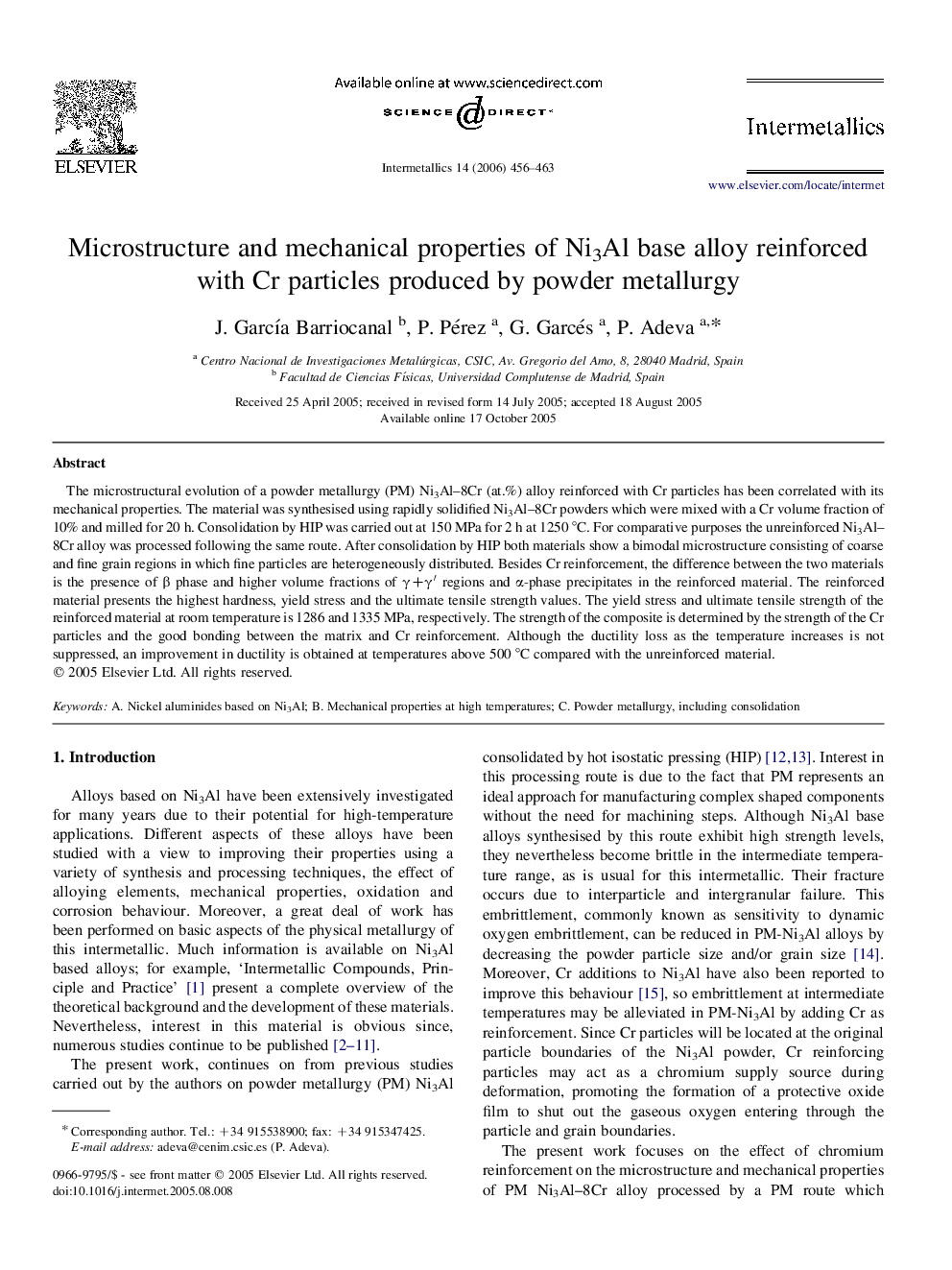| Article ID | Journal | Published Year | Pages | File Type |
|---|---|---|---|---|
| 1602151 | Intermetallics | 2006 | 8 Pages |
The microstructural evolution of a powder metallurgy (PM) Ni3Al–8Cr (at.%) alloy reinforced with Cr particles has been correlated with its mechanical properties. The material was synthesised using rapidly solidified Ni3Al–8Cr powders which were mixed with a Cr volume fraction of 10% and milled for 20 h. Consolidation by HIP was carried out at 150 MPa for 2 h at 1250 °C. For comparative purposes the unreinforced Ni3Al–8Cr alloy was processed following the same route. After consolidation by HIP both materials show a bimodal microstructure consisting of coarse and fine grain regions in which fine particles are heterogeneously distributed. Besides Cr reinforcement, the difference between the two materials is the presence of β phase and higher volume fractions of γ+γ′ regions and α-phase precipitates in the reinforced material. The reinforced material presents the highest hardness, yield stress and the ultimate tensile strength values. The yield stress and ultimate tensile strength of the reinforced material at room temperature is 1286 and 1335 MPa, respectively. The strength of the composite is determined by the strength of the Cr particles and the good bonding between the matrix and Cr reinforcement. Although the ductility loss as the temperature increases is not suppressed, an improvement in ductility is obtained at temperatures above 500 °C compared with the unreinforced material.
